
10 Tools for IP Compliance in AI Governance
Managing intellectual property (IP) compliance in AI is critical as regulations tighten and risks grow. Companies face legal disputes, massive fines (up to $35 million or 7% of global revenue under the EU AI Act), and reputational damage if they fail to comply. This article highlights 10 tools that simplify compliance, protect data, and ensure adherence to global standards.
Key Takeaways:
- Why It Matters: AI adoption is surging, but IP compliance gaps expose businesses to lawsuits and penalties.
- What to Look For: Tools should offer automation, real-time monitoring, seamless integrations, scalability, and industry-specific features.
- Top Tools: Solutions like Vanta, Drata, and Secureframe automate compliance, track risks, and integrate with business systems.
Quick Comparison:
| Tool | Focus | Key Features | Best For | Regulatory Coverage |
|---|---|---|---|---|
| Domo | Data centralization | Real-time dashboards, metadata safety | Mid to large enterprises | SOC 2, ISO 27001 |
| Vanta | Continuous monitoring | Automated evidence, cloud integration | SaaS companies | SOC 2, ISO 27001, GDPR |
| Sprinto | Regulatory oversight | Compliance workflows, policy enforcement | Healthcare, SaaS | SOC 2, ISO 27001, HIPAA |
| Drata | Evidence automation | Real-time monitoring, 100+ integrations | Startups, mid-sized firms | SOC 2, ISO 27001, PCI DSS |
| Secureframe | Multi-framework | Risk tracking, multi-standard support | Large enterprises | Multiple frameworks |
These tools help businesses navigate complex IP challenges, safeguard sensitive data, and comply with evolving regulations while minimizing legal and financial risks.
What to Look for in IP Compliance Tools
Finding the right IP compliance tools means selecting solutions that align with your business operations and regulatory requirements. The best tools should integrate smoothly into your processes without adding unnecessary complexity.
Automation and Real-Time Monitoring
Automation is a must-have for managing IP compliance in fast-paced AI environments. Manual methods simply can’t keep up with the speed and volume of data AI systems handle. Automated compliance tools simplify complex tasks, minimize human error, and help maintain regulatory adherence. Real-time monitoring is equally important, as it keeps an eye on regulations, audits, and documentation updates continuously. For example, Vanta automates about 90% of compliance processes, highlighting how automation can turn a tedious manual process into a streamlined system. Look for tools that offer features like continuous monitoring to flag potential IP violations, track data usage, and send timely alerts.
Integration with Business Applications
Your compliance tool must integrate seamlessly with your existing systems to avoid disrupting workflows. The best tools come with pre-built integrations for cloud services and other essential systems, making data integration easier. Take Drata, for instance - it integrates with over 120 systems, including HRIS, Single Sign-On, and cloud providers, and offers an Open API for custom setups. This simplifies evidence collection and control monitoring. Similarly, Vanta connects with major cloud providers like AWS, GCP, and Azure for automated security checks, while Scrut Automation integrates with more than 70 commonly used applications to streamline compliance. When assessing integration options, think about both your immediate needs and long-term goals. Tools with open APIs can adapt as your tech stack evolves.
Scalability and Industry-Specific Features
Scalability is key for tools to grow alongside your business, handling more users, processes, and workloads without losing efficiency or security. For example, a leading food and beverage company rolled out Secomea across 100 sites in just 100 days, demonstrating how scalable tools can support rapid expansion. Prima Power, a global player in sheet metal technology, also chose Secomea for its adaptable architecture that meets growing demands. Beyond scalability, industry-specific features are critical for staying compliant with sector regulations. Healthcare organizations need HIPAA compliance, financial firms require SOX adherence, and legal practices must protect attorney-client privilege. Look for tools with modular frameworks that allow you to add features as needed - this ensures both cost-effectiveness and flexibility as your compliance needs evolve. These attributes set the foundation for reviewing the top tools in the market.
10 Tools for IP Compliance in AI Governance
Choosing the right tools can simplify IP compliance in AI governance. These platforms automate key workflows and maintain ongoing monitoring to ensure adherence to regulatory standards. Below, we break down the features of each tool that play a critical role in supporting IP compliance.
Domo
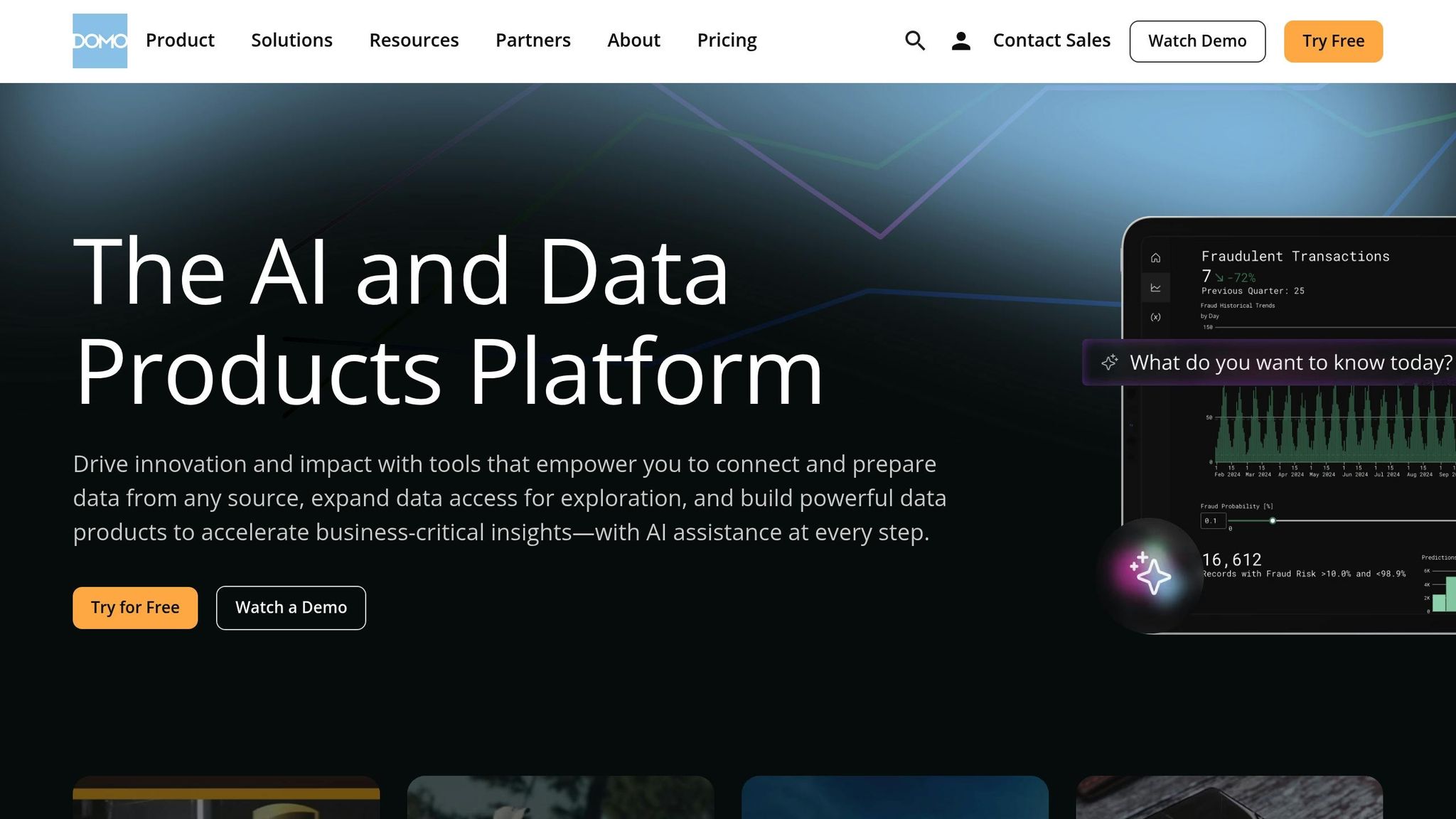
Domo brings together compliance data from multiple sources, offering a centralized view to help protect intellectual property.
AuditOne
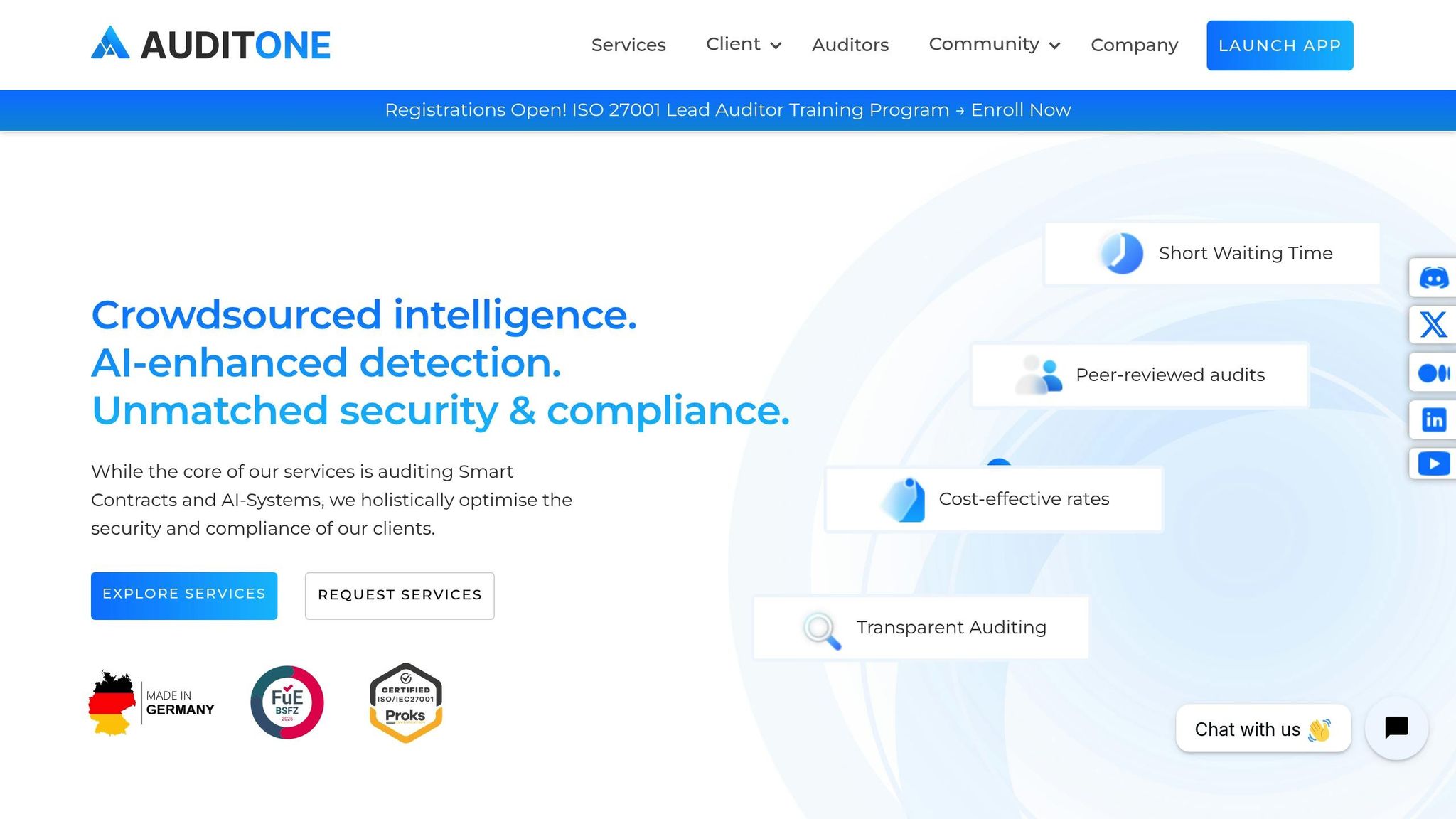
AuditOne focuses on automating compliance documentation and tracking processes, reducing manual effort.
Certa
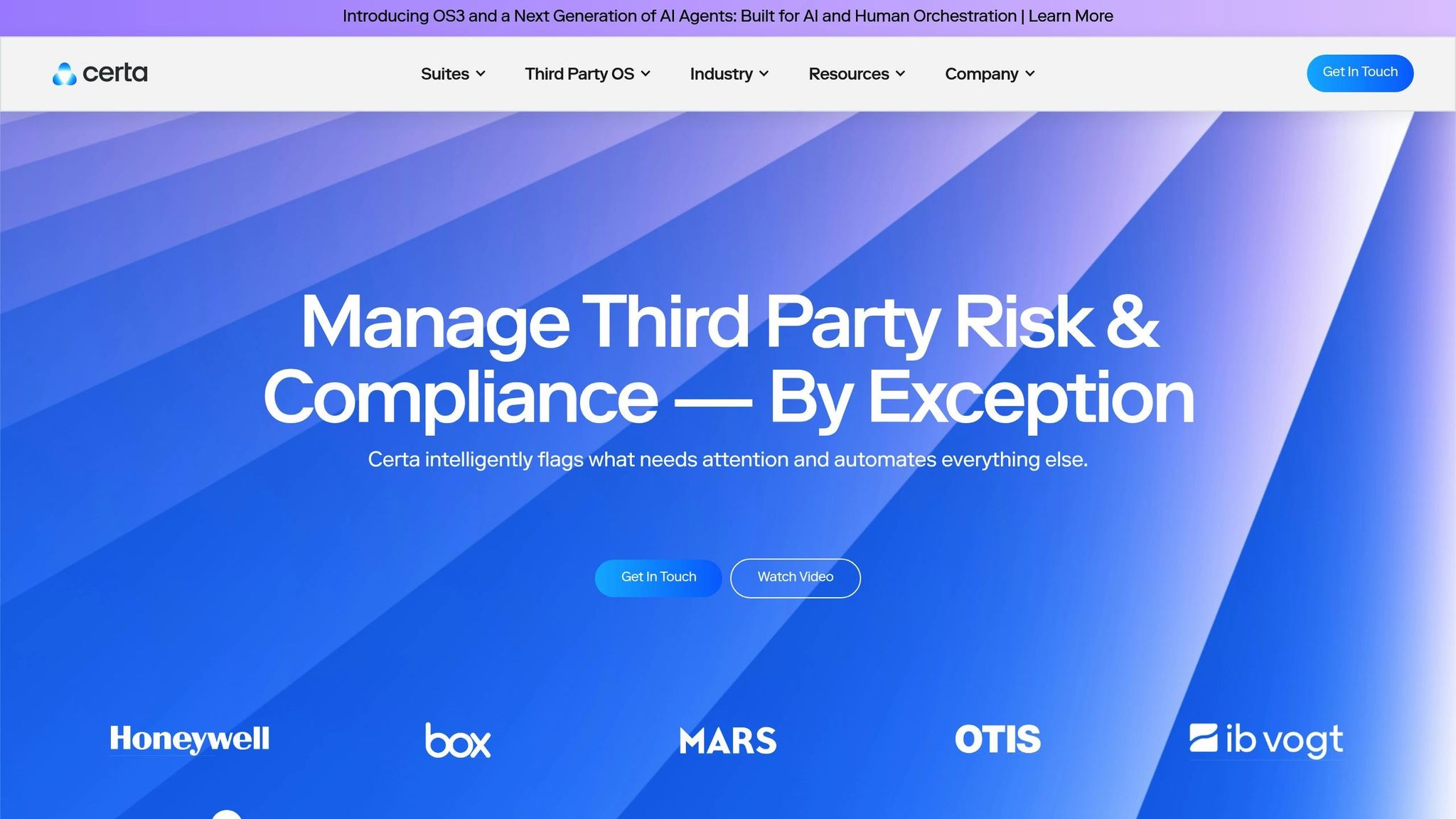
Certa specializes in managing third-party compliance, ensuring external partnerships meet necessary standards.
Darktrace
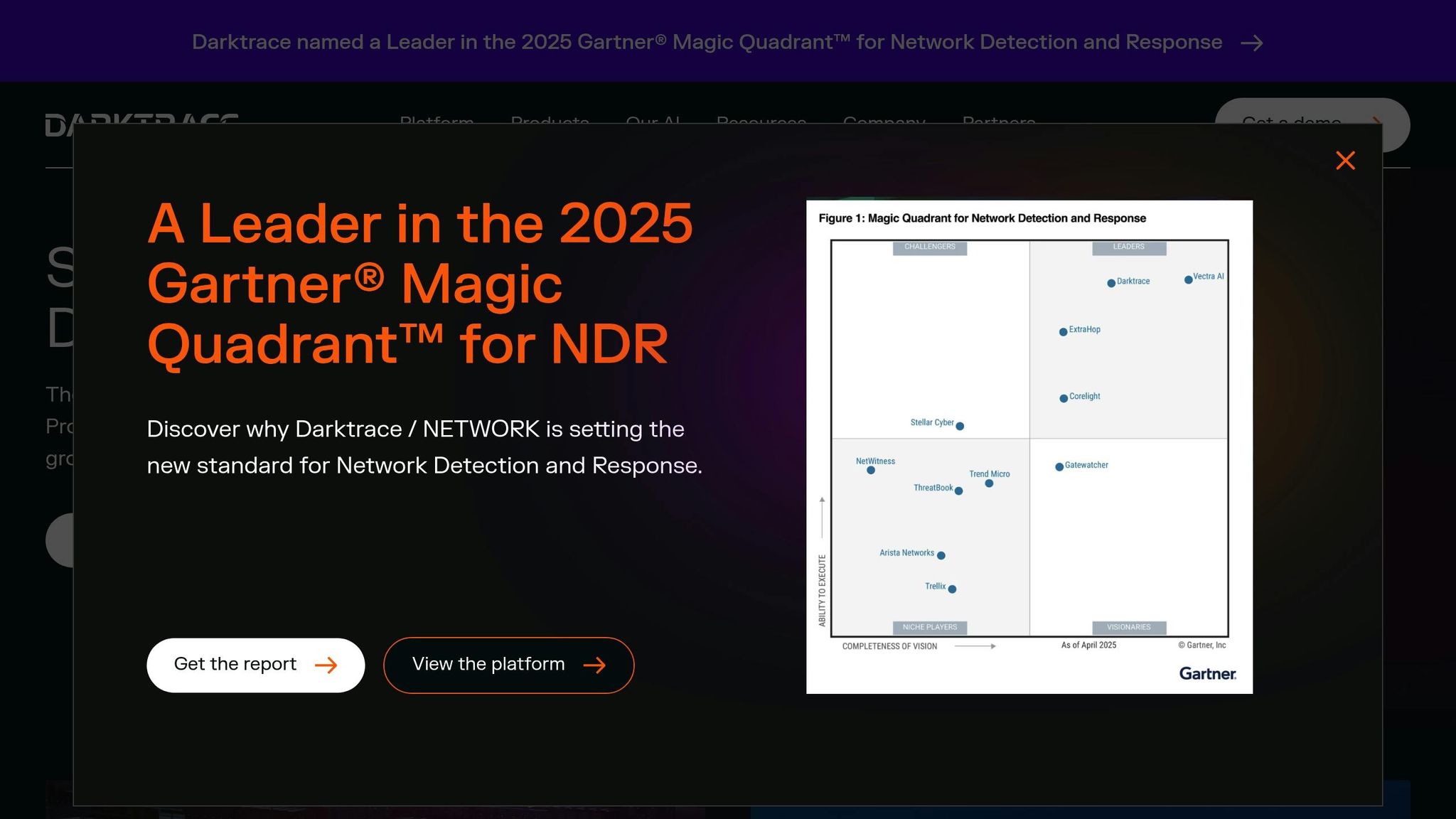
Darktrace identifies and protects against vulnerabilities, keeping your intellectual property secure.
Vanta

Vanta provides continuous monitoring and integrates seamlessly with cloud platforms.
Sprinto
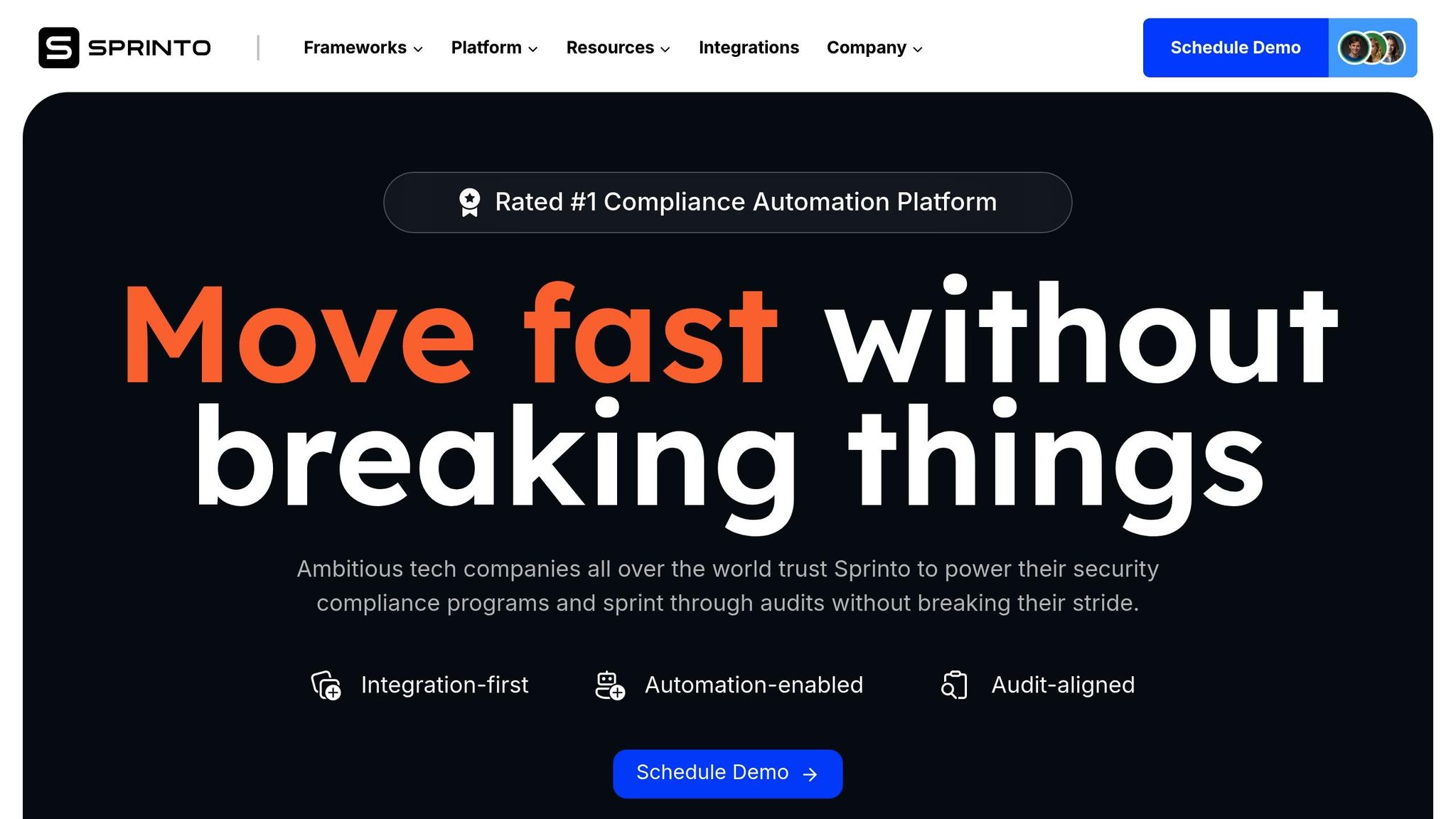
Sprinto simplifies regulatory oversight, particularly for smaller organizations with limited resources.
Drata
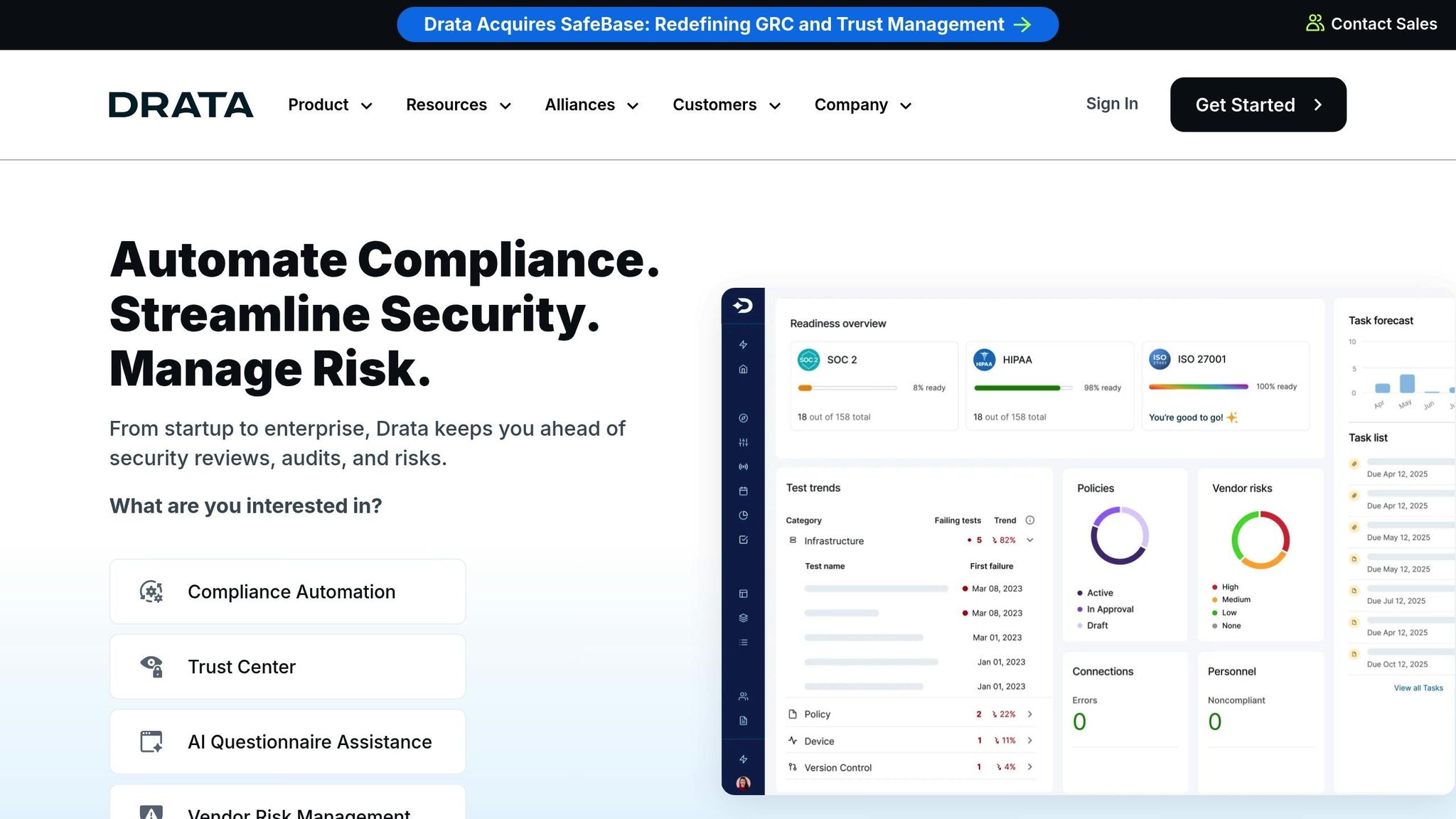
Drata automates real-time monitoring and collects evidence to support compliance efforts.
Secureframe
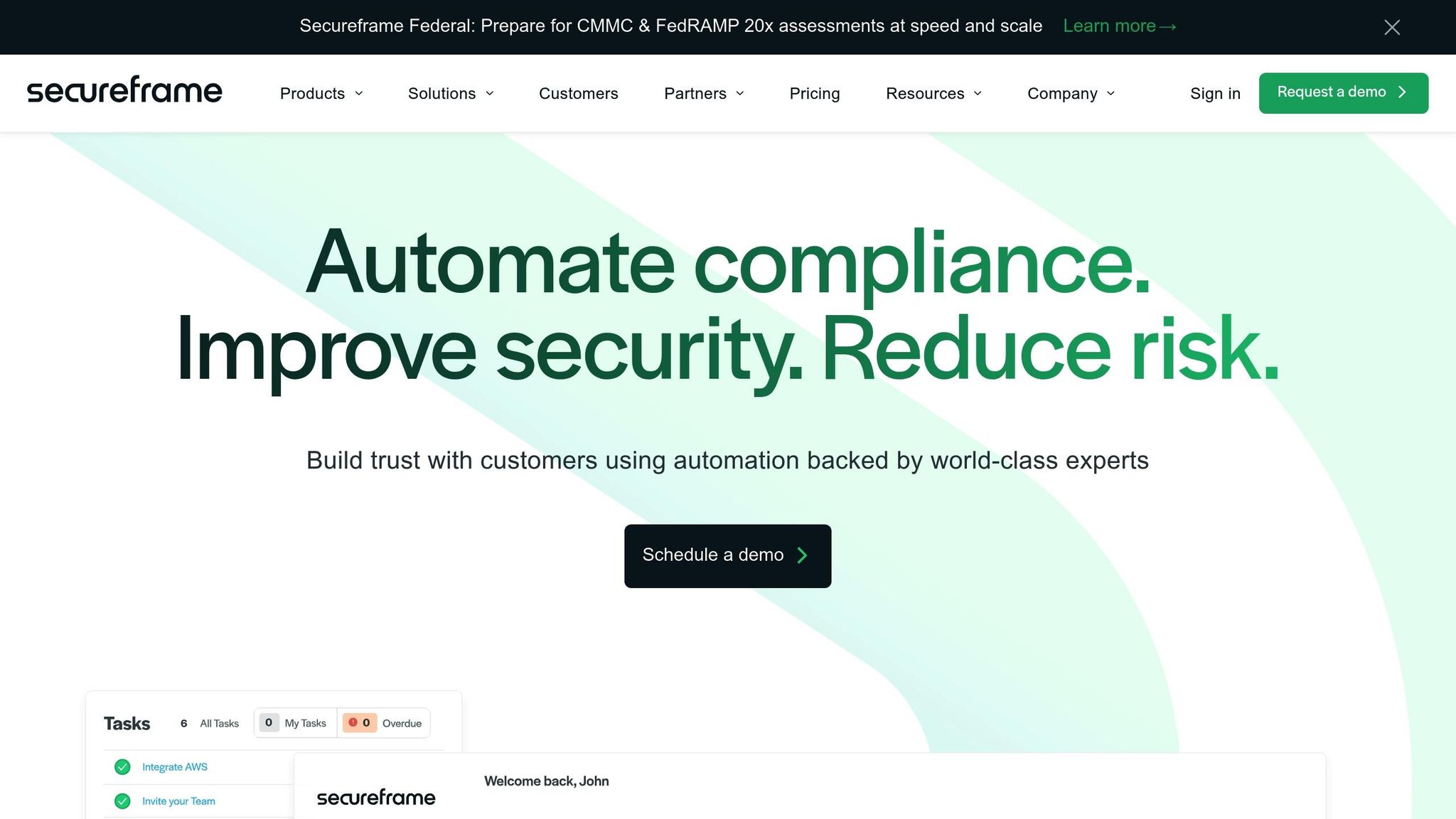
Secureframe offers compliance management across various frameworks, with tools to maintain clear visibility of IP-related issues.
Scrut

Scrut enforces compliance policies while helping to manage potential risks effectively.
AuditBoard
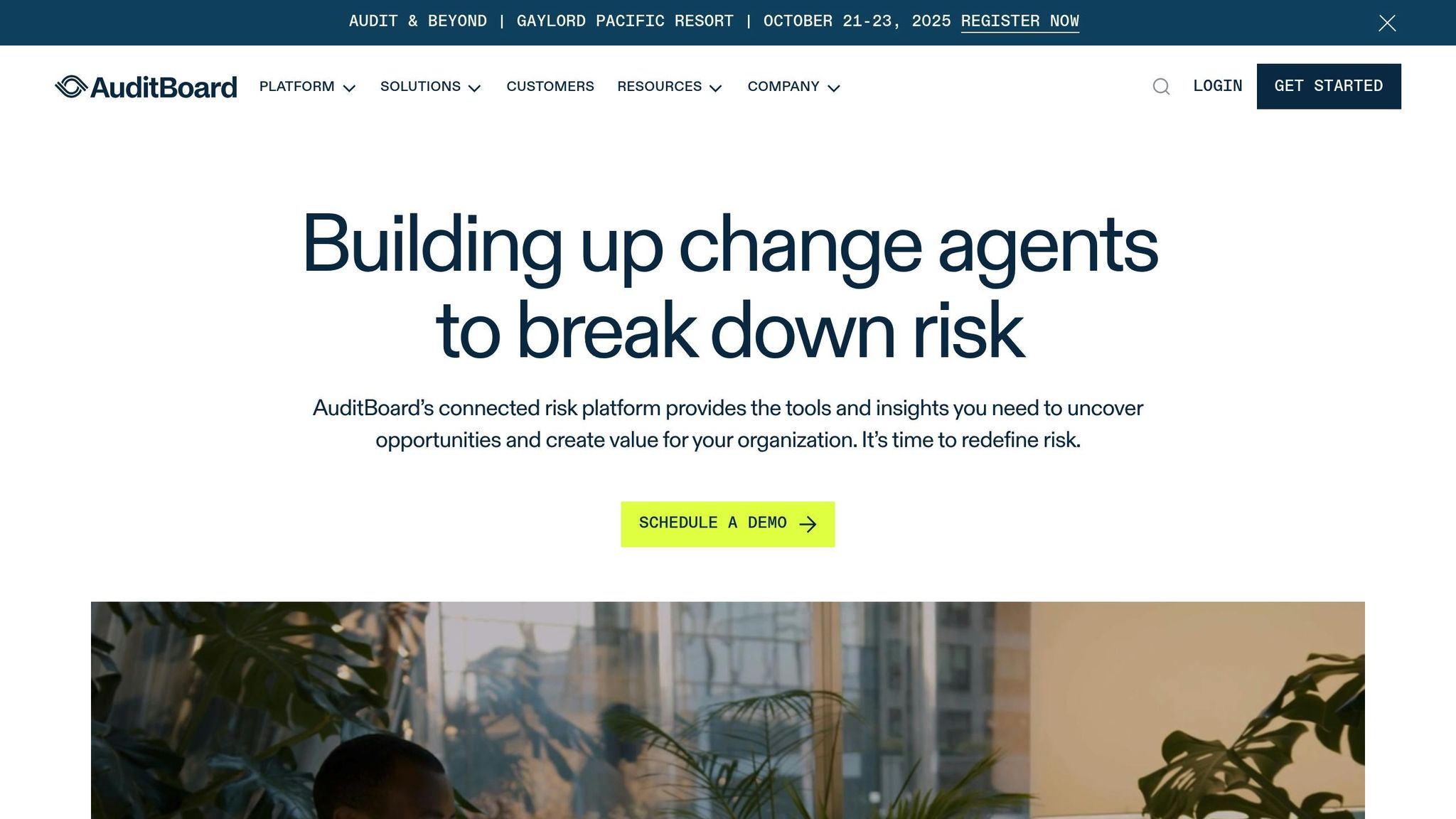
AuditBoard integrates compliance tracking with risk management, streamlining the audit process.
"A really successful compliance technology is going to help you track your regulatory inventory. Ideally, you have a system that is flowing all of that information into you."
– Amanda Cohen, Vice President of GRC Products at Resolver
These tools are particularly useful in industries with strict compliance needs, such as aerospace, defense, and robotics. They are also invaluable for life sciences organizations, where rapidly changing regulations demand strong oversight. By integrating automation, scalability, and real-time monitoring, these platforms strengthen IP compliance frameworks for AI governance.
Tool Comparison: Features and Strengths
Comparison Metrics
IP compliance tools come with a variety of features tailored to meet different regulatory needs. Understanding their key capabilities can help organizations choose the right platform to align with their specific goals.
| Tool | Primary Focus | Key Automation Features | Integration Capabilities | Best For | Regulatory Coverage |
|---|---|---|---|---|---|
| Domo | Data centralization | AI-powered metadata transmission, real-time dashboards | 5,000+ business applications | Mid to large enterprises | SOC 2, ISO 27001 |
| Vanta | Continuous monitoring | Real-time compliance tracking, automated evidence | Cloud infrastructure tools | SaaS companies | SOC 2, ISO 27001, GDPR |
| Sprinto | Regulatory oversight | Policy enforcement and compliance workflows | Business applications, cloud services | SaaS companies | SOC 2, ISO 27001, HIPAA |
| Drata | Evidence automation | Real-time monitoring and automated evidence collection | 100+ integrations with business tools | Startups and mid-sized companies | SOC 2, ISO 27001, PCI DSS |
| Secureframe | Multi-framework management | Automated assessments and risk tracking | Security and business applications | Mid to large organizations | Multiple compliance frameworks |
The scalability of these tools often aligns with the size and needs of a business. For example, Drata and Vanta are well-suited for startups and growing companies, offering flexible onboarding and pricing. On the other hand, Secureframe caters to larger enterprises needing multi-framework support and advanced customization.
Industry-specific needs also play a significant role. For instance, Sprinto provides coverage for HIPAA, making it a strong choice for healthcare organizations that must meet strict compliance standards. Similarly, the financial sector, known for its heavy regulatory demands, requires tools capable of handling complex, multi-jurisdictional requirements.
Integration capabilities further distinguish top-tier platforms. Tools like Domo prioritize data safety by transmitting only metadata when managing external AI models. This approach is increasingly important as AI is expected to power 90% of commercial applications by the end of 2025.
Automation is another critical factor. Platforms like Drata streamline operations with real-time monitoring, minimizing the time needed to detect and address compliance issues.
Regulatory coverage varies significantly across tools. While many platforms support common frameworks like SOC 2 and ISO 27001, businesses operating in multiple regions or industries may need solutions that can adapt to evolving regulations and provide extensive legal coverage.
Ultimately, the right tool depends on a company’s stage of growth and the complexity of its compliance needs. Newer companies might benefit from Vanta or Sprinto, which offer user-friendly guidance, while more established businesses may lean toward Secureframe for its expansive feature set.
Pricing is another consideration, with most platforms offering tiered models that scale alongside a company’s growth.
sbb-itb-ef0082b
How IP Compliance Tools Support AI Customer Service
AI customer service systems handle a massive amount of sensitive data, making IP compliance tools an essential part of their operation. With 92% of organizations acknowledging the need for new ways to manage risks related to AI and 69% facing legal and intellectual property challenges, these tools have become a cornerstone for businesses using AI-driven customer service platforms. For example, Dialzara employs these tools to secure customer interactions 24/7 across industries like healthcare, legal, and financial services. This ensures operations remain secure, legally compliant, and capable of delivering smooth user experiences.
Protecting Data Privacy and Security
IP compliance tools build on established compliance practices to enhance customer service systems. These tools automatically classify data, identify personally identifiable information (PII), and monitor for unauthorized access. They also anonymize data to meet GDPR and HIPAA standards. With machine learning algorithms continuously scanning for breaches, such automation becomes critical - especially when managing high call volumes where manual oversight isn’t feasible.
The financial stakes are high. A single non-compliance incident can cost an average of $14.8 million, and GDPR violations can lead to penalties reaching €20 million or 4% of a company's global revenue. For small and medium-sized businesses relying on AI customer service to cut costs, these fines could be catastrophic.
Meeting Regulatory Requirements
Industries like healthcare, finance, and legal services each have unique compliance demands. IP compliance tools help AI customer service systems adapt to these varying regulations, even as they evolve. By embedding data protection directly into system architectures, compliance becomes proactive rather than reactive. This approach allows a single AI system to meet multiple regulatory standards simultaneously. Additionally, these tools simplify reporting, reducing the manual work needed for audits and risk assessments while providing detailed records of data handling practices.
In February 2025, the EU AI Act introduced penalties of up to €35 million or 7% of annual revenue for noncompliance, specifically targeting AI systems in customer-facing roles.
"By designing, deploying, and maintaining AI systems with compliance in mind, businesses can set themselves up to build safe, responsible, and scalable AI solutions that deliver value even as new laws and regulations take effect." – Ian Heinig, Agentic AI Marketer, Sendbird
Navigating complex, cross-border regulations makes IP compliance tools essential for AI customer service providers. Platforms like Dialzara integrate these mechanisms to ensure a strong compliance framework. This allows businesses to focus on delivering exceptional customer experiences while maintaining the trust and legal safeguards necessary for long-term success.
Conclusion: Building Better IP Compliance
In today’s landscape of AI governance, IP compliance tools are no longer optional - they’re essential. With penalties for non-compliance becoming harsher and regulatory risks on the rise, organizations that fail to prioritize compliance face severe consequences, including hefty fines and lasting reputational harm.
The financial benefits of proactive compliance are clear. Companies that invest in AI security and automation see significant savings, with an average reduction of $3.05 million per data breach - an impressive 65.2% decrease compared to those without adequate protections. These tools not only safeguard a company’s bottom line but also create a foundation for responsible innovation.
To build effective IP compliance, organizations must establish governance frameworks that align with both global and industry-specific standards. This means forming oversight committees, implementing AI-specific data mapping, and deploying real-time reporting systems to monitor AI activities across all departments. Regular training for teams on ethical AI practices and staying updated on new regulations ensures compliance becomes an integral part of the company culture, not an afterthought.
The regulatory environment is evolving quickly, with governments and organizations worldwide developing new AI governance frameworks. Deputy Attorney General Lisa Monaco highlights this shift:
"When our prosecutors assess a company's compliance program - as they do in all corporate resolutions - they consider how well the program mitigates the company's most significant risks. And for a growing number of businesses, that now includes the risk of misusing AI."
For businesses like Dialzara, which operate in highly regulated sectors such as healthcare, legal, and financial services, robust IP compliance tools are critical. These tools ensure 24/7 operations while maintaining trust and adhering to legal safeguards, enabling sustainable growth in a competitive market.
Success in AI governance hinges on viewing compliance as a core function, not a future task. As Michael R. Justus from Katten puts it:
"AI governance is a mandatory compliance function right now rather than next quarter or next year."
FAQs
What should I look for in tools to ensure IP compliance in AI governance?
When selecting tools to ensure intellectual property (IP) compliance in AI governance, it's important to focus on features that enhance clarity, security, and efficiency. A key feature to consider is a centralized inventory of AI models, which allows for clear tracking and thorough documentation of how these models are used. Another critical aspect is automated compliance checks, which can quickly flag potential copyright or trademark violations, saving time and reducing risks.
Tools with real-time monitoring are also invaluable, as they can detect any unauthorized use of protected data as it happens. Pair this with strong security protocols to safeguard sensitive information from breaches. Additionally, features that facilitate vendor evaluations and provide risk assessment frameworks are crucial for ensuring that third-party AI solutions comply with IP laws, helping to minimize liabilities. By prioritizing these capabilities, you can simplify compliance processes and shield your business from potential legal and financial challenges.
How do automation and real-time monitoring improve IP compliance in AI governance?
Automation and real-time monitoring are game-changers when it comes to strengthening intellectual property (IP) compliance in AI governance. By automating repetitive tasks like trademark tracking or patent searches, businesses can efficiently manage even the most extensive IP portfolios while minimizing the chances of human error.
Real-time monitoring adds another layer of protection by enabling companies to spot unauthorized use of their IP - whether it’s trademarks or copyrighted content - on digital platforms almost instantly. This rapid detection allows for quicker action against potential infringements, safeguarding both legal standing and brand reputation. On top of that, real-time insights help businesses stay aligned with evolving regulations, reducing compliance risks and keeping operations running smoothly.
Why do IP compliance tools need to offer industry-specific features and scalability?
Why Industry-Specific Features Matter in IP Compliance Tools
IP compliance tools must cater to the unique demands of different industries to be truly effective. For example, a tech company will likely need tools that focus on managing software patents, while a pharmaceutical firm might prioritize solutions that address drug formulations and clinical research. These tailored features are essential for meeting the specific legal and operational requirements of each sector.
The Role of Scalability in IP Compliance
As businesses grow or venture into new markets, the ability to scale becomes critical. A scalable IP compliance tool can handle larger data volumes, increasingly complex IP portfolios, and the challenges of managing intellectual property across multiple jurisdictions. This ensures that businesses can maintain efficiency, avoid risks like missed deadlines or mishandled IP rights, and continue to grow without disruption.
Related Posts
10 AI Governance Best Practices for Telcos 2024
Learn the 10 best AI governance practices for telcos in 2024 to protect data, build trust, and stay competitive. Check out the checklist now!
Navigating Global AI Regulations: 2024 Business Guide
Navigate global AI regulations in 2024 with this comprehensive business guide. Learn key rules, compliance measures, and strategies for staying up-to-date.
AI Compliance Automation: 2024 Guide
Explore the benefits, technologies, use cases, and best practices of AI compliance automation in this comprehensive guide. Learn how AI is transforming regulatory compliance.
10 Steps to AI Compliance: Training & Governance Tips
Discover 10 essential steps to ensure AI compliance, including understanding regulatory requirements, forming a compliance team, and implementing data governance practices.
